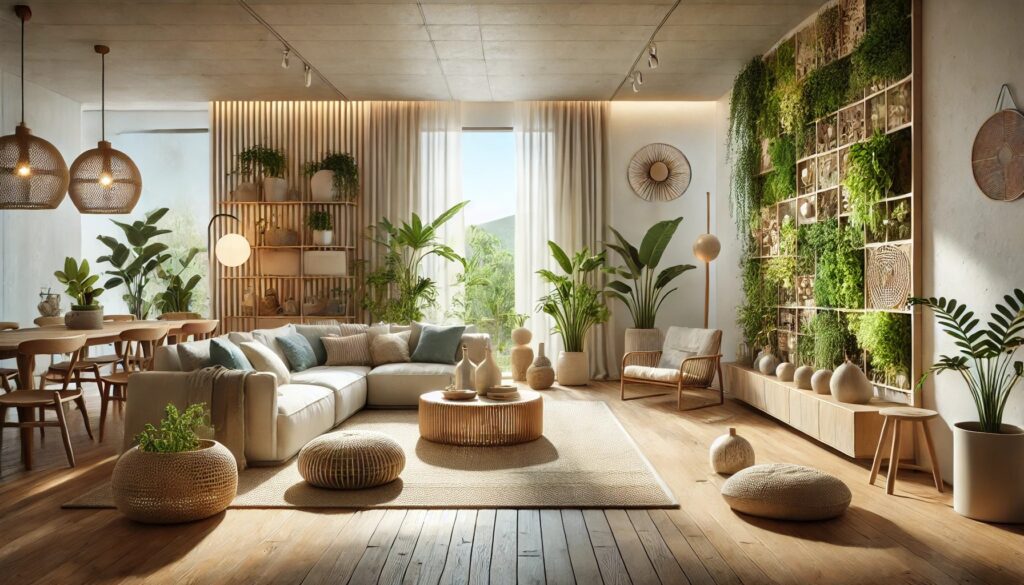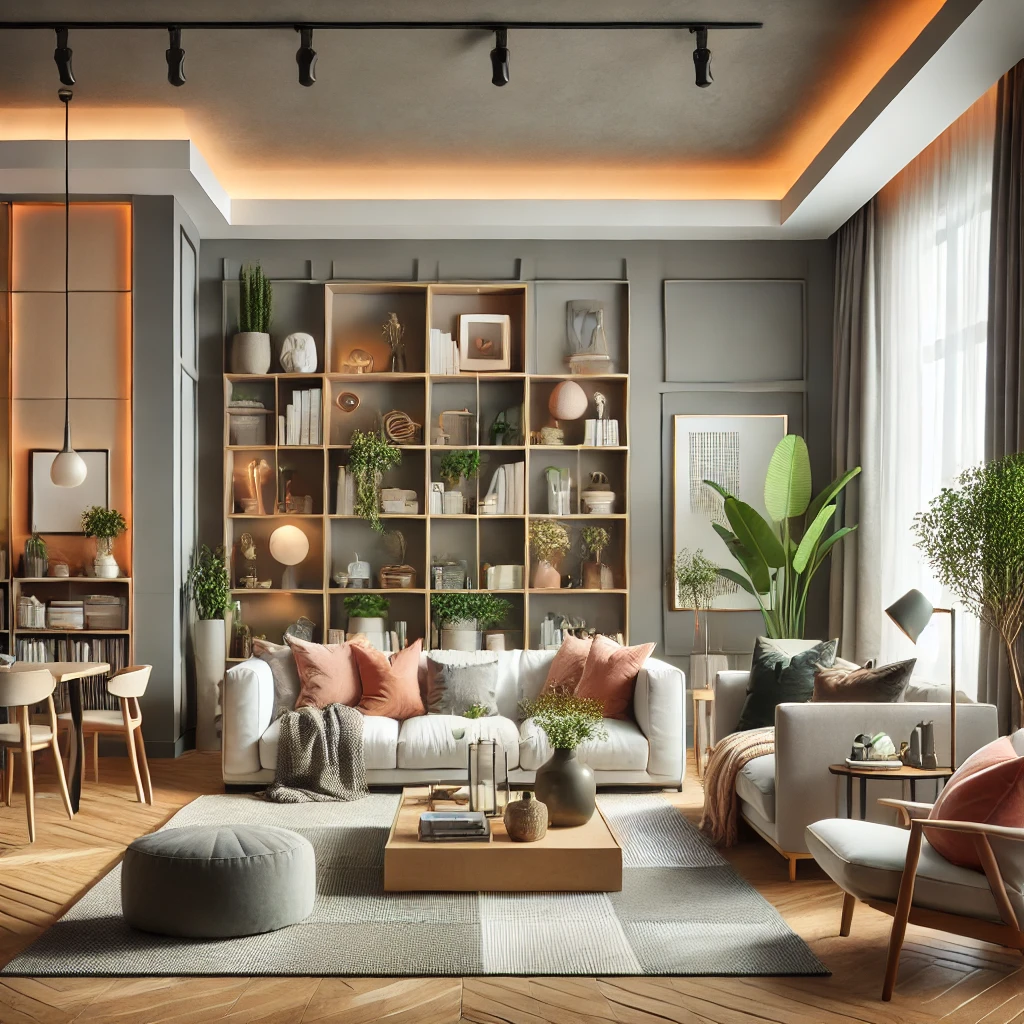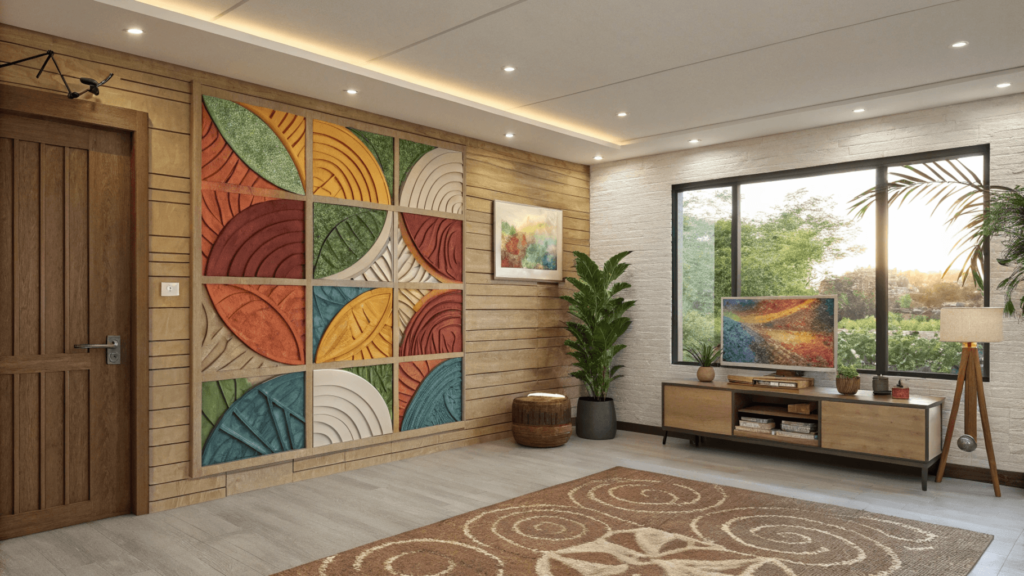Transform your living space into an eco-conscious sanctuary without compromising on style or breaking the bank.
As a passionate interior designer who’s spent years helping homeowners create beautiful, environmentally conscious spaces, I’ve witnessed firsthand how sustainable design has evolved from a niche interest to a mainstream movement. Today, I’m excited to share the latest trends and practical tips that can help you create an eco-friendly home that’s both stunning and sustainable.
Why Sustainable Interior Design Matters Now More Than Ever
Let me share a quick story: Last month, I worked with a young family who wanted to renovate their starter home on a tight budget. Like many of you, they were concerned about rising energy costs and environmental impact but worried that sustainable design would be out of reach financially. By the end of their renovation, not only did we create a beautiful space using eco-friendly materials, but they’re now saving significantly on their monthly utility bills.
The truth is, sustainable interior design isn’t just a trend – it’s becoming a necessity. According to recent studies, buildings account for nearly 40% of global carbon emissions, with interior furnishings and decor playing a significant role in this environmental impact.
What Exactly Is Sustainable Interior Design?
Sustainable interior design goes beyond just using bamboo flooring or adding a few plants to your space. It’s a holistic approach that considers:
- The environmental impact of materials and products
- Energy efficiency and resource conservation
- Indoor air quality and human health
- Long-term durability and maintenance
- Social responsibility in production and sourcing
Top Sustainable Design Trends for 2025
1. Biophilic Design: Bringing the Outdoors In
The connection between nature and well-being isn’t just intuitive – it’s scientifically proven. Biophilic design has emerged as one of the most significant trends in sustainable interior design. Here’s how to incorporate it:
- Use natural light strategically by maximizing window exposure
- Incorporate living walls or vertical gardens
- Choose organic shapes and patterns in furniture and decor
- Add water features for both aesthetic and acoustic benefits
2. Circular Furniture and Decor
According to recent trends, one of the most exciting developments is the rise of circular furniture design. This approach focuses on:
- Modular pieces that can be easily repaired or updated
- Furniture made from recycled materials
- Items designed for easy disassembly and recycling
- Rental and subscription-based furniture services
3. Smart Home Integration for Sustainability
Technology and sustainability are no longer at odds. Modern smart home features can significantly reduce your environmental impact:
- Smart thermostats for optimal temperature control
- LED lighting systems with motion sensors
- Water conservation through smart irrigation
- Energy monitoring systems
Sustainable Materials: Making the Right Choices
Let’s break down the most sustainable materials trending in 2024:
| Material Type | Sustainability Features | Best Uses |
| Reclaimed Wood | Carbon neutral, reduces deforestation | Flooring, furniture, accent walls |
| Cork | Renewable, biodegradable | Flooring, wall coverings, furniture |
| Bamboo | Fast-growing, renewable | Flooring, furniture, decorative elements |
| Recycled Metal | Reduces mining impact | Light fixtures, hardware, furniture |
| Natural Fibers | Biodegradable, renewable | Textiles, rugs, upholstery |
Practical Implementation: Where to Start
As someone who’s helped countless homeowners transition to sustainable design, I always recommend starting with these steps:
- Audit Your Current Space
- Assess energy efficiency
- Identify toxic materials
- Evaluate lighting and ventilation
- Create a Sustainable Design Plan
- Set realistic goals and timeline
- Establish a budget
- Prioritize improvements
- Make Smart Material Choices
- Research eco-friendly alternatives
- Verify certifications
- Consider lifecycle costs
The Financial Benefits of Sustainable Design
Many of my clients are pleasantly surprised to learn that sustainable design often pays for itself. Here’s how:
- Reduced energy costs through efficient design
- Lower maintenance and replacement costs
- Increased property value
- Potential tax incentives and rebates
Common Questions About Sustainable Interior Design
Are Sustainable Materials More Expensive?
While some sustainable materials may have higher upfront costs, they often prove more economical over time due to their durability and energy efficiency. For example, LED lighting might cost more initially but can reduce energy bills by up to 75%.
How Can I Make My Existing Space More Sustainable?
Start with simple changes like:
- Switching to LED bulbs
- Adding thermal curtains
- Installing low-flow water fixtures
- Using VOC-free paints and finishes
Looking Ahead: The Future of Sustainable Design
The future of sustainable interior design is incredibly exciting. We’re seeing developments in:
- Self-cleaning materials that reduce chemical use
- Carbon-negative furniture production
- Advanced recycling technologies
- Innovative biomaterials
Conclusion: Your Journey to Sustainable Living
Remember, creating a sustainable home isn’t about perfection – it’s about progress. Start with small changes and build from there. Your choices today contribute to a better tomorrow, both for your home and our planet.
Want to learn more about specific sustainable design techniques or get personalized advice? Leave a comment below or sign up for our newsletter for regular updates on sustainable interior design trends and tips.



